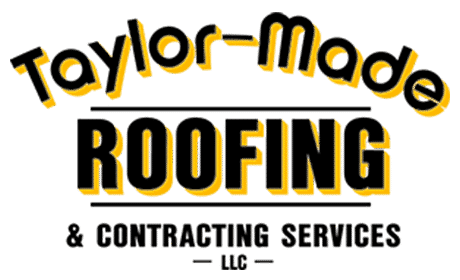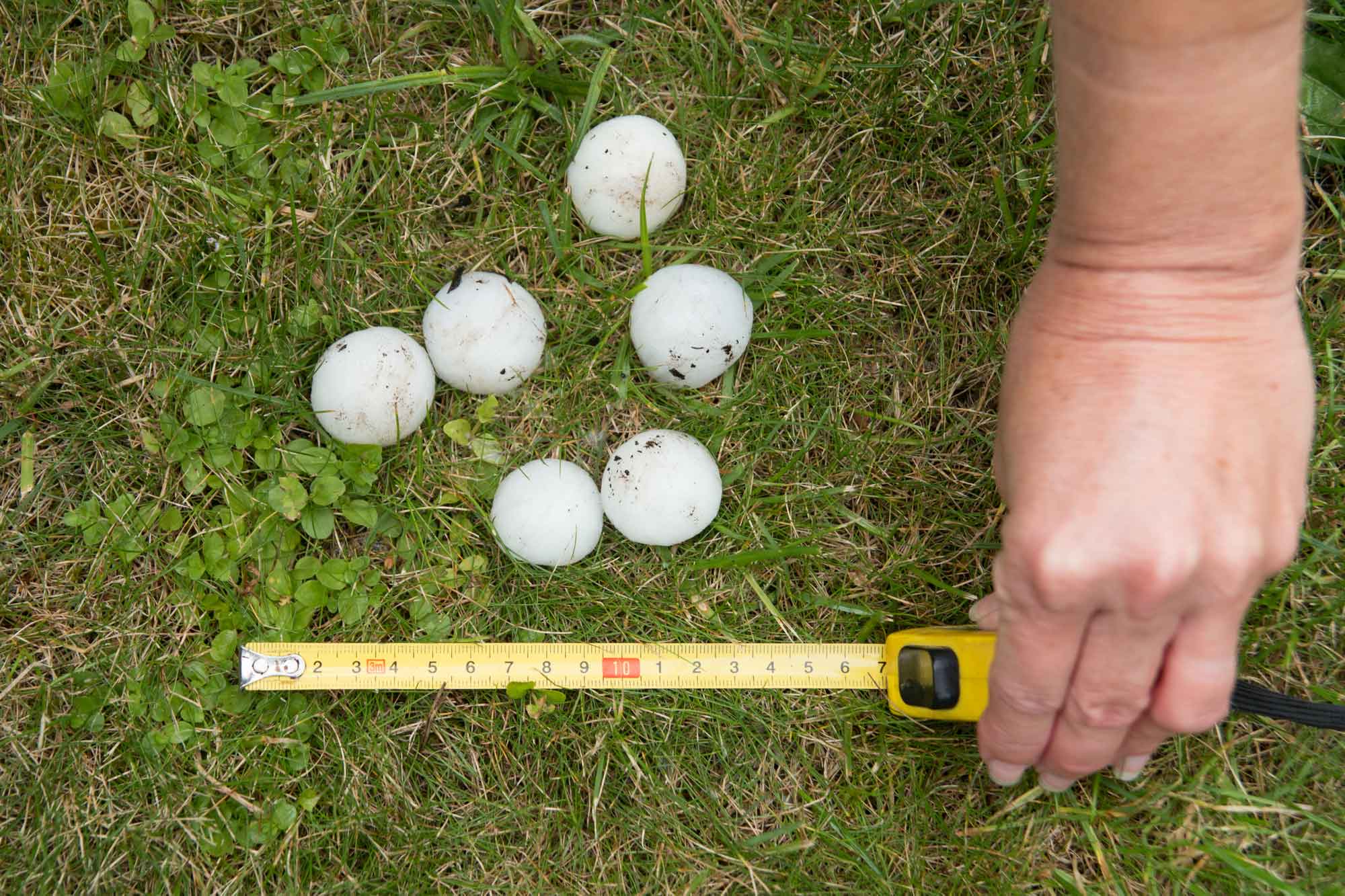When a storm sends hail into town, many people worry that the icy pellets will damage their vehicles. While this is a valid concern and you should certainly check for dents on your car’s hood and roof, don’t forget about another piece of property that isn’t so easily seen: your roof. After a hailstorm, you need to look for damage on your roof. So what does roof hail damage look like? And why is it so important to get your roof checked for damage after a hailstorm? Let’s discuss . . .
First, let’s review how hailstorms happen.
When updrafts in thunderstorms send tiny particles of dust or frozen rain rocketing up into the upper levels of the clouds, where temperatures are below freezing, ice will cluster around them. Eventually, these small balls of ice drop lower into the clouds, collecting more moisture in the form of rain drops and water vapor along the way, until another updraft sends them back into the frozen heights again. The process repeats until the particles become too heavy for the updrafts to propel. Then, this frozen precipitation tumbles to the ground as hail.
What Does Roof Hail Damage Look Like?
What does roof hail damage look like? It depends on the type of roofing that you have:
- Asphalt and Composite Shingles: If you have asphalt or composite shingles atop your building, hail damage can resemble a series of bruises that are randomly scattered across the surface. You may notice missing granules or places that look unusually shiny.
- Wood Shingles: If you have wood shingles, you may notice impact marks and splits in the shingles.
- Slate Roofing: Hail striking a slate roof tends to leave cracks or gouges.
- Metal Roofing: With metal roofing, you may spot dents arrayed in no discernible pattern across the surface.
Factors That Affect the Damage Level
Sometimes hail results in nothing more than an interesting experience. In other cases, it can be incredibly destructive. Several factors can impact the amount of damage a hailstorm inflicts on a roof:
- Hailstone Size: A hailstone can be as tiny as a pea or as hefty as a softball. Some are rather slushy; some are frozen solid. The bigger and denser the hailstones, the greater the potential for damage.
- Wind Conditions: Wind speed and wind direction also matter. Wind-driven hailstones generally strike with greater force, which means they are likely to do more harm.
- Barriers: The positioning of natural barriers like trees and landscaping and nearby structures is another issue. If these items shelter the roof from some or all of the hail, there may be less damage.
- Roof Construction: The age, condition, and materials used in a roof also impact the amount of damage. An older roof in rough shape is generally more vulnerable than a newer roof in excellent condition. Also, various building materials react to the impact of hail differently. While asphalt and metals are prone to dings, wood, slate, and vinyl tend to crack.
When to Schedule an Inspection for Roof Hail Damage
Scaling roofs is a task best left to the professionals, so if you suspect that you might have hail damage on your roof, it’s wise to call a reputable roofer to evaluate the situation for you. When should you be concerned? There are several red flags for hail damage that you can note while keeping your feet firmly on the ground. If you notice any of the following tell-tale signs, make arrangements to have your roof checked:
- On your roof, you spot bruise-like marks, missing granules, shiny spots, impact marks, splits in wood shingles, cracks, gouges, or dents.
- You see dents or other indications of impacts on your gutters, downspouts, windowsills, siding, or roof eaves.
- You discover hail damage on your heating or air conditioning units.
- You find evidence of hail damage on your deck, tool shed, or other exterior features.
Why Roof Hail Damage Is a Problem
Hail damage can compromise the functional integrity and lifespan of your roof. Your roof is a vital part of your home’s building envelope, and if it cannot perform properly, you may find yourself battling leaks and other expensive issues. That’s why it’s so important to get a roofing professional to inspect your roof as soon as possible if you suspect that there might be roof hail damage.
Storms can cause significant harm to your roof in a very short period of time. If you are concerned that your roof has been damaged by hail, wind, or other products of a severe storm, don’t wait. Contact Taylor-Made Roofing today to schedule your inspection. A member of our reputable roofing team can evaluate the roofing system, identify any needed repairs, and provide you with an estimate.

